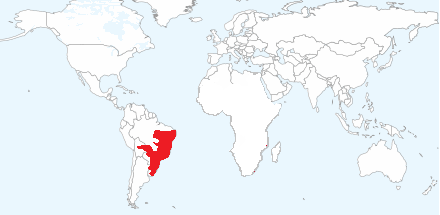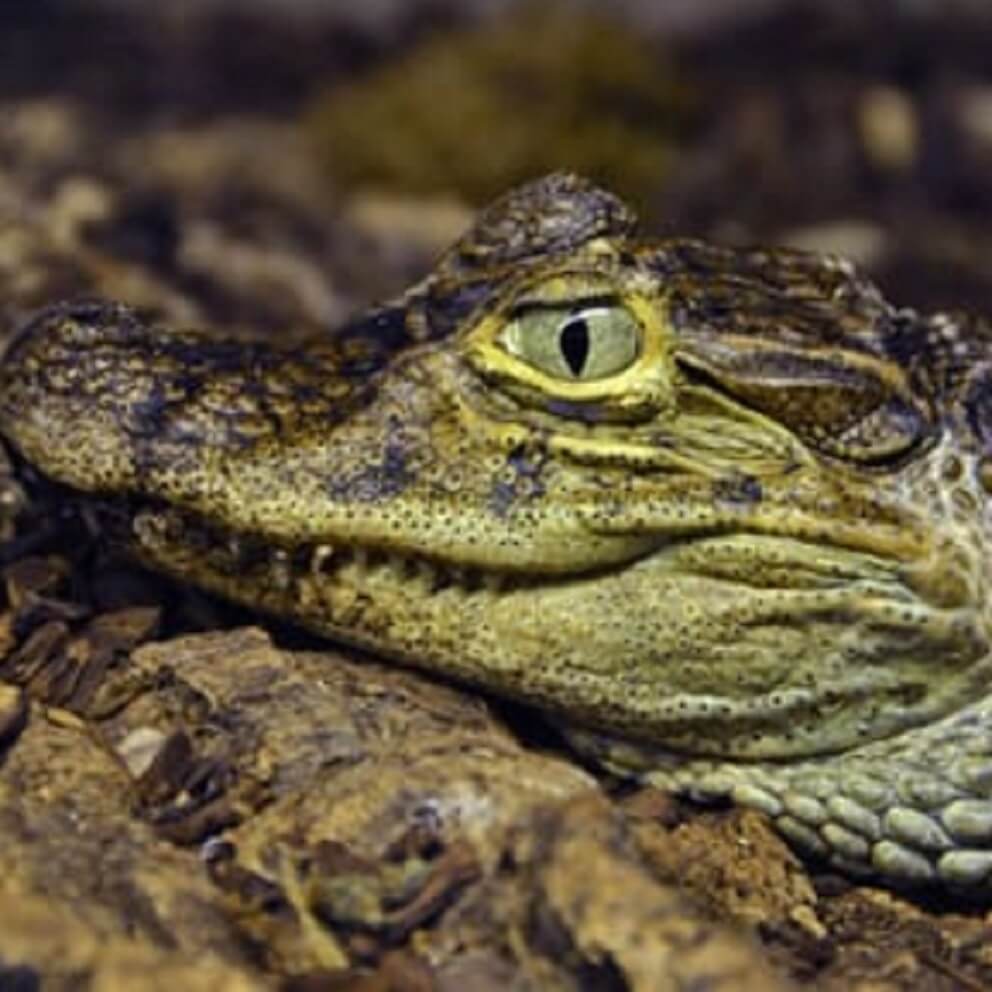The broad-snouted caiman is classified as Lower Risk/least concern on the IUCN Red List of Threatened Species.
This species is listed on CITES Appendix I (except the population of Argentina, which is included in Appendix II).
Red List Category & Criteria: Lower Risk/least concern ver 2.3
Year Published: 1996
Date Assessed: 1996-08-01

Countries: Argentina; Bolivia; Brazil; Paraguay; Uruguay

The broad-snouted caiman is found in eastern and central South America, including southeastern Brazil, northern Argentina, Uruguay, Paraguay and Bolivia. It is found mostly in freshwater marshes, swamps, and mangroves, usually in still or very slow-moving waters. It will often use cattle stock ponds.
Its diet consists mainly of small invertebrates, and it can crush shells to feed on turtles and snails. Their jaws are particularly well suited to crushing the shells of crustaceans and turtles. As the size of caiman increases, the size of its prey tends to increase, including birds, fish, and reptiles.
This species is still widespread, but habitat loss, pollution and illegal hunting pose a risk. Its skin is greatly valued for its smooth texture. Until recently, this was the largest threat to the broad-snouted caiman. However, most countries have made hunting them illegal, which has helped them to recover their population.
Some depleted populations have been restocked and sustainable harvesting of this species has been implemented in some areas. This has proved most successful in Argentina, where ranching programmes have discouraged illegal hunting by rewarding local people for finding caiman nests, a set number of which are then taken so that the hatchlings can be harvested for their hides.
Deforestation and pollution run-off are the biggest threats today, especially in eastern Brazil. Successful management programs, including ranching and restocking, exist.
Est. wild population: 250,000 to 500,000
Main conservation threats: Habitat destruction, pollution and illegal hunting



